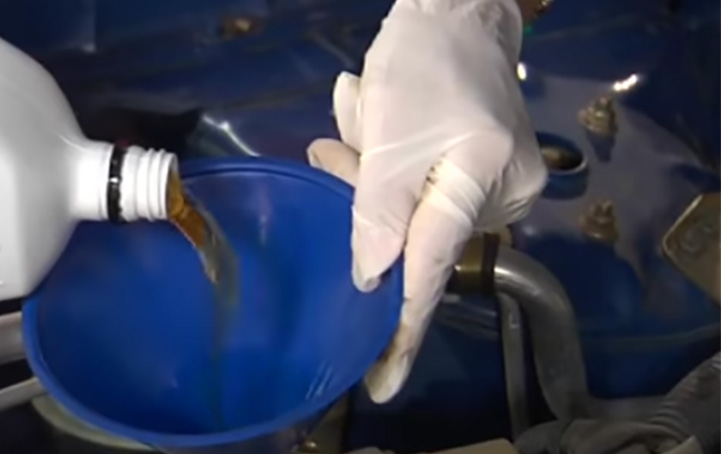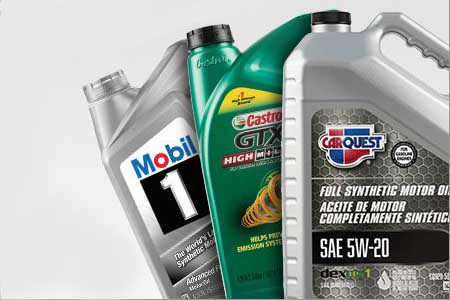Warmer weather means catching up on DIY auto maintenance. If you're checking your oil levels or tackling an oil change, it's good to know what the various oil colors and textures reveal about the health of your car. Here are some common questions.

Is thin, amber-colored oil OK?
Yes. Out-of-the-bottle, conventional engine oils are a red-brown amber color. If the oil has added detergents to keep the motor clean, the working oil will eventually get thicker and darker in color due to a high concentration of dirt suspended in the oil. This change in oil color and consistency is a reminder that it's time to change the oil.
Why is my oil thick and dark?
If your oil is dark, thin, and runny (but still translucent), you're probably using a synthetic blend. Thanks to engine-performance-enhancing additives, synthetic oils collect even more grime from our engines than conventional oil, making them appear darker both out of the bottle and when you check the dipstick. If you had your oil changed at a repair shop recently and opted for premium service, this may explain the unrecognizable oil color.
Oil also darkens in color as the engine heats up. If you're peeking at the dipstick after a long, hot drive, the oil will likely be darker in color than it would appear in a cool, parked vehicle. This is normal.
If you aren't using a synthetic oil blend, and your oil is dark and sludgy, you are past due for an oil change. The oil is saturated with engine muck. Swap it out for fresh, viscous oil ASAP. If you drive often on dirt roads, perform towing tasks, or participate in auto racing, your oil will darken sooner than oil in a basic commuter vehicle. Oil that's the color of black coffee has absorbed a lot of carbon from the combustion process and other nasty byproducts and will often have an acrid, acidic smell to it.
Why do I have frothy or milky oil?
Creamy, milky oil may indicate a leak or failure in the head gasket, intake manifold, or possibly the gasket at the water pump. Coolant may have seeped through and mixed with the oil, giving it the lighter appearance and frothy texture. When the vehicle is cool, check the radiator fluid levels. Are they low? You may also notice bubbles in the radiator coolant while the engine is running, meaning that combustion gases are making their way through the cooling system. Look at the tailpipe when the car is running. Is your exhaust white or does it smell like coolant? If you answered yes to these questions, you probably have coolant in your oil.
Oil can also appear milky when mixed with water. If the radiator fluid levels are normal and the tailpipe inspection doesn't reveal any white, smoky exhaust, you may have an issue with condensation or water leaking into the engine. Are you using water instead of coolant in the radiator? Did it leak through the head gasket?
If your oil color resembles a frothy latte, there's something wrong. Discolored oil indicates the engine is not operating at the proper temperature or something is leaking into the oil supply, both of which warrant a trip to your mechanic for a diagnosis. It's also likely that the oil will read far above the Full mark on the dipstick if that much coolant has migrated into the crankcase. Obviously, it needs attention pronto because oil contaminated with coolant can't do a good job of lubricating bearings and other moving parts.








